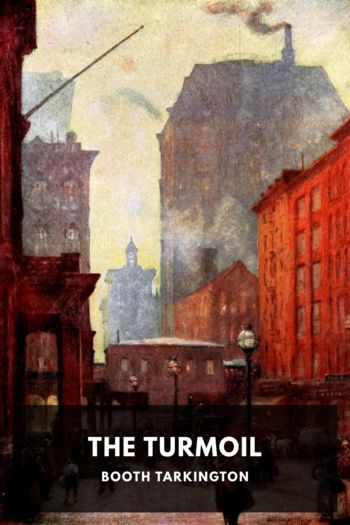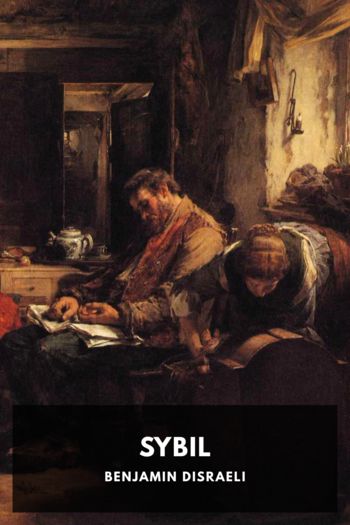Malaysian Maverick: Mahathir Mohamad in Turbulent Times, Barry Wain [best mystery novels of all time .txt] 📗

- Author: Barry Wain
Book online «Malaysian Maverick: Mahathir Mohamad in Turbulent Times, Barry Wain [best mystery novels of all time .txt] 📗». Author Barry Wain
Stephen Duthie, "Bank Negara Chief Finds Gratitude Doesn't Last", Asian Wall Street Journal, 4 April 1994.
Mahathir Mohamad, Reflections on Asia, p. 140.
Doug Tsuruoka, "Malaysia: Testing Times", Far Eastern Economic Review, 17 October 1991, p. 78, http://www.feer.com/articles/archive/1991/9110_17/P056.html (accessed 23 January 2006).
Stephen Duthie, "Bank Negara Chief Finds Gratitude Doesn't Last".
John Berthelsen, "Malaysia Hits Hongkong Bank for Speculation", Asian Wall Street Journal, 21 August 1986.
Stephen Duthie, "Huge Charge at Bank Negara Startles Analysts", Asian Wall Street Journal, 2 April 1993.
Ibid.
Ibid.
Ibid.
Stephen Duthie, "Bank Negara Aims New Rules at Speculators", Asian Wall Street Journal, 24 January 1994.
Stephen Duthie, "Bank Negara is Criticized in Parliament", Asian Wall Street Journal, 28 April 1993.
Ibid.
Stephen Duthie, "Can Bank Negara Keep a Good Currency Down?", Asian Wall Street Journal, 18 January 1994.
Edmund Terence Gomez and Jomo K.S., Malaysia's Political Economy: Politics, Patronage and Profits (Cambridge: Cambridge University Press, 1999 edition), pp. 94-95.
Doug Tsuruoka, "Change in the Air: Bank Negara Moves to Sell Malaysian Airlines Stake", Far Eastern Economic Review, 23 December 1993, p. 52, http://www.feer.com/articles/archive/1993/9312_23/P053.html (accessed 23 January 2006).
In response to Tajudin's suit, Dr. Mahathir told reporters he agreed to the privatization after Daim approached him and said Tajudin wanted to buy the airline. Dr. Mahathir said he did not know who set the price for the shares. "I only decide on principles," he said. Pauline Ng, "Mahathir Denies Involvement in MAS Deal".
Stephen Duthie, "Bank Negara Posts Another Huge Loss", Asian Wall Street Journal, 1 April 1984.
Ibid.
Stephen Duthie, "Malaysia's Lim Seeks Central-Bank Probe", Asian Wall Street Journal, 13 April 1994.
"Tengku Razaleigh Responds to Dr Mahathir's Allegations Against Him", Aliran Monthly, 1994: 11, p. 36.
Email correspondence with Bank Negara, 22 August 2008.
Stephen Duthie, "Bank Negara Posts Another Huge Loss".
Stephen Duthie, "Bank Negara Chief Finds Gratitude Doesn't Last".
Interview with Daim Zainuddin, 18 October 2007.
Arfa'eza A. Aziz, "Forex Losses: Anwar Names Those Responsible", 19 July 2006, http://www.malaysiakini.com/news/54097 (accessed 30 August 2008). Jaffar Hussein passed away in 1998.
Raphael Pura, "Malaysian Steelmaker Spouts Red Ink and Recriminations", Asian Wall Street Journal, 9 February 1996.
Interview with Mahathir Mohamad, 31 March 2008.
Eric Chia passed away in 2008.
Raphael Pura, "Malaysian Steelmaker Spouts Red Ink and Recriminations".
Raphael Pura, "Malaysia Discloses Hefty Loss at Perwaja", Asian Wall Street Journal, 19 October 1995.
Raphael Pura, "Malaysian Steelmaker Spouts Red Ink and Recriminations".
Leslie Lopez, "Malaysia Says It Will Bail Out Ailing Perwaja", Asian Wall Street Journal, 13 March 1996.
Leslie Lopez and Raphael Pura, "Steel Fiasco May Rattle Malaysian Government", Asian Wall Street Journal, 16 February 1996.
Ibid.
Ibid.
Leslie Lopez and Raphael Pura, "Malaysia Says Perwaja Faces Financial Crisis", Asian Wall Street Journal, 22 May 1996.
Leslie Lopez and Raphael Pura, "Steel Fiasco May Rattle Malaysian Government".
Leslie Lopez and Raphael Pura, "Malaysia Picks Firms for Rescue of Steelmaker", Asian Wall Street Journal, 19 June 1996.
Raphael Pura and Leslie Lopez, "Maju is Confident That It Can Turn Perwaja Around", Asian Wall Street Journal, 26 June 1996.
Leslie Lopez, "Malaysia's Perwaja Sees Losses Mount", Asian Wall Street Journal, 12 June 2000.
Ibid.
Steven Gan, "Interviewing Dr M", 23 May 2006, http://www.malaysiakini.com/editorials/514647 (accessed 30 August 2008).
Interview with Mahathir Mohamad, 31 March 2008.
(7)
Big, Bigger, Bust
Of all the slogans associated with Dr. Mahathir's rule, the most resonant was not created by, or for, him. As far as anyone knows, Malaysia boleh was the tagline used in a marketing campaign for a health beverage in the 1980s. It translates as "Malaysia can", or more grammatically, "Malaysia can do it", and with Dr. Mahathir at the helm it became the battle cry of the nation. It echoed from the stadium as Malaysian sportsmen upheld national honour on the field, and it rang out in response to any news that could be construed as a Malaysian triumph.
The sentiment embodied in Malaysia boleh fit Dr. Mahathir's can-do personality perfectly. He wanted his fellow Malaysians, especially the Malays, to be proud, capable and confident. While Dr. Mahathir pursued initiatives meant to eliminate vestiges of colonial thinking at home and show that Malaysia was taken seriously abroad, he built for the ages on a scale that impressed Malaysians and foreigners alike. The north-south highway stretched from the tip of southern Thailand to the outskirts of northern Singapore. Connecting Penang island to the mainland was the longest bridge in Asia. An international airport for the capital matched the region's biggest and best. A proposed dam in Sarawak state would flood an area roughly the size of Singapore. Kuala Lumpur, once a nondescript urban tangle, took shape as a modern metropolis distinguished by eye-catching architecture that included iconic twin towers, the world's tallest. Malaysia boleh!
Driven by a nationalistic vision and paying due regard to aesthetics, Dr. Mahathir's building frenzy created a buzz among Malaysians. The doctor-politician diagnosed that they were suffering from a dire case of inferiority complex, and they responded with puffed chests to the treatment he prescribed and administered. As Dr. Mahathir explained, his monumental projects were "good for the ego" of a developing country. "To be noticed when you are small, sometimes you have to stand on a box," he said.[1] Ignoring critics, Dr. Mahathir kept on building in ever more spectacular style: a Formula One racing circuit, a government-guided version of California's Silicon Valley and a brand new administrative capital for the future Malaysia.
After the Malaysian government made it into Guinness World Records with the world's highest flagpole, individual Malaysians went scrambling up Mount Everest, crossed the Antarctic and sailed the oceans in search of more records. If they did not qualify for the real thing, they found recognition in the Malaysia Book of Records, a home-grown version that let them create their own categories of accomplishments.
Dr. Mahathir championed the record making and breaking, sometimes appearing at events to participate, or commend the performers, reinforcing the belief that they were doing their bit to turn Malaysia into a mighty country. He embraced corporate executives who delivered, such as Ting Pek Khiing, a brash entrepreneur from Sarawak who made his fortune in construction and timber. Ting left an enduring impression on Dr. Mahathir by hurriedly building





Comments (0)